
Overview
The primary objective of this article is to delineate the essential conversion rate optimization (CRO) roles that are indispensable for direct-to-consumer (DTC) brands. It asserts that positions such as:
- UI/UX designers
- Conversion copywriters
- Data analysts
- A/B testing specialists
are critical for augmenting customer experiences and driving sales. Evidence indicates that well-executed CRO strategies can substantially enhance profitability and conversion rates for DTC enterprises.
Introduction
In an increasingly competitive landscape, direct-to-consumer (DTC) brands are confronted with the urgent challenge of maximizing profitability while keeping advertising costs in check. Conversion rate optimization (CRO) stands out as an essential strategy, presenting brands with the opportunity to elevate their success metrics through data-driven insights and an understanding of consumer psychology.
As DTC brands strive for sustainable growth in 2025, it becomes crucial to identify which specific CRO roles are vital for achieving this objective. This article explores nine pivotal positions that can substantially influence conversion rates, offering insights into how each role contributes to a brand's overall success.
Parah Group: Leading Conversion Rate Optimization Agency for DTC Brands
Parah Group stands out as a leading agency in conversion rate optimisation jobs, dedicated to empowering direct-to-consumer (DTC) companies to boost profitability without incurring additional advertising costs. By leveraging data-driven strategies and insights from consumer psychology, Parah Group enhances success metrics and average order values (AOV) for its clients. Their holistic approach guarantees that every facet of a client's marketing strategy is meticulously optimized for growth, establishing them as a reliable partner in a competitive landscape.
The impact of effective CRO on profitability is profound; organizations that implement robust optimization strategies can experience success levels that surpass the industry average of 3.34%, with top performers achieving rates of 4.8% or higher. For instance, businesses that utilize tailored call-to-action buttons report results that are 202% superior to conventional alternatives, underscoring the power of personalized marketing.
Parah Group's distinctive methodologies, emphasizing sustainable growth and profitability, differentiate them from other CRO agencies. Collaborating with a specialized CRO agency like Parah Group enables DTC brands to concentrate on their core strengths while leveraging conversion rate optimisation jobs for expert insights and strategies. This collaboration can yield significant improvements in , such as a 36% increase in ROI on advertisements and notable enhancements in AOV and success ratios. As industry leaders assert, optimizing profitability without escalating advertising expenditures is essential for sustainable growth in today's marketplace.
Successful CRO strategies encompass:
- Simplifying checkout processes
- Enhancing product pages with high-quality images and comprehensive descriptions
- Leveraging user-generated content to foster trust and engagement
These tactics not only elevate the client experience but also drive increased transaction success, ultimately leading to higher revenue and enhanced customer loyalty.
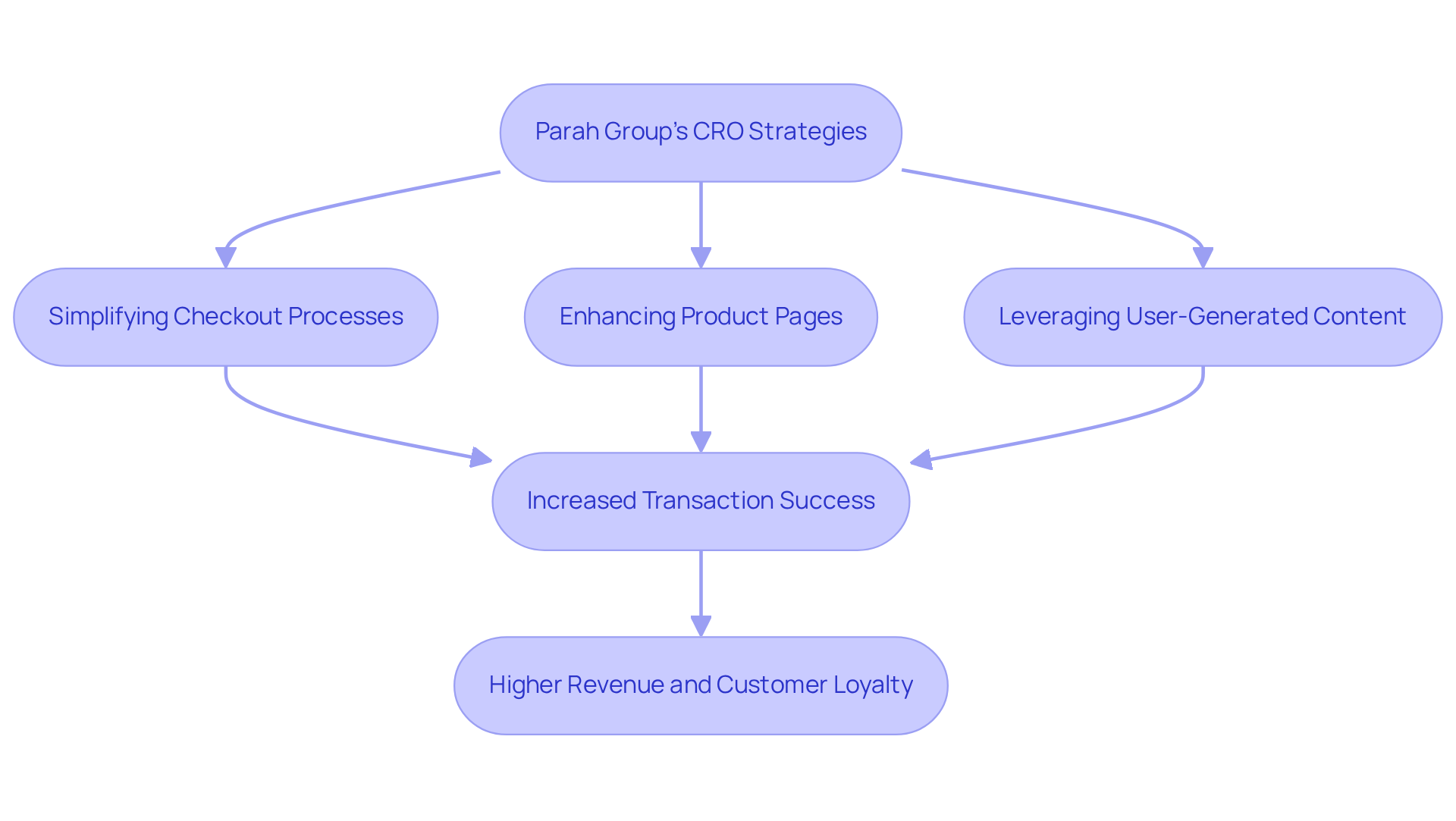
UI/UX Designer: Crafting User-Centric Experiences to Boost Conversions
UI/UX designers are pivotal in enhancing success metrics by crafting user-focused experiences that align with Parah Group's comprehensive strategy for optimizing results (CRO). They emphasize intuitive navigation, appealing aesthetics, and responsive design to ensure individuals can engage effortlessly with the website. Through evaluations and response analyses, UI/UX designers identify challenges and refine the customer experience, leading to increased success.
Parah Group's five-step approach underscores the importance of understanding consumer psychology, which bolsters UI/UX designers' efforts in creating resonant experiences. Research shows that a well-crafted interface can elevate success rates by as much as 200%, while improved UX design can yield increases of up to 400%. Furthermore, with mobile devices generating 54.5% of global website traffic, mobile optimization is crucial, as 67% of individuals prefer to purchase from mobile-friendly sites.
Successful DTC brands exemplify this; for instance, an online shoe retailer saw its sales rate soar from 2% to over 4% following a redesign, demonstrating the effectiveness of user-focused design. As Mashud Rana states, 'Effective UI/UX makes your site simple to use, visually attractive, and easy to navigate, prompting individuals to act more quickly, which enhances outcomes.'
Ultimately, the work of UI/UX designers, when integrated with , transforms the online shopping experience into a seamless and enjoyable journey, fostering customer loyalty and driving revenue growth.
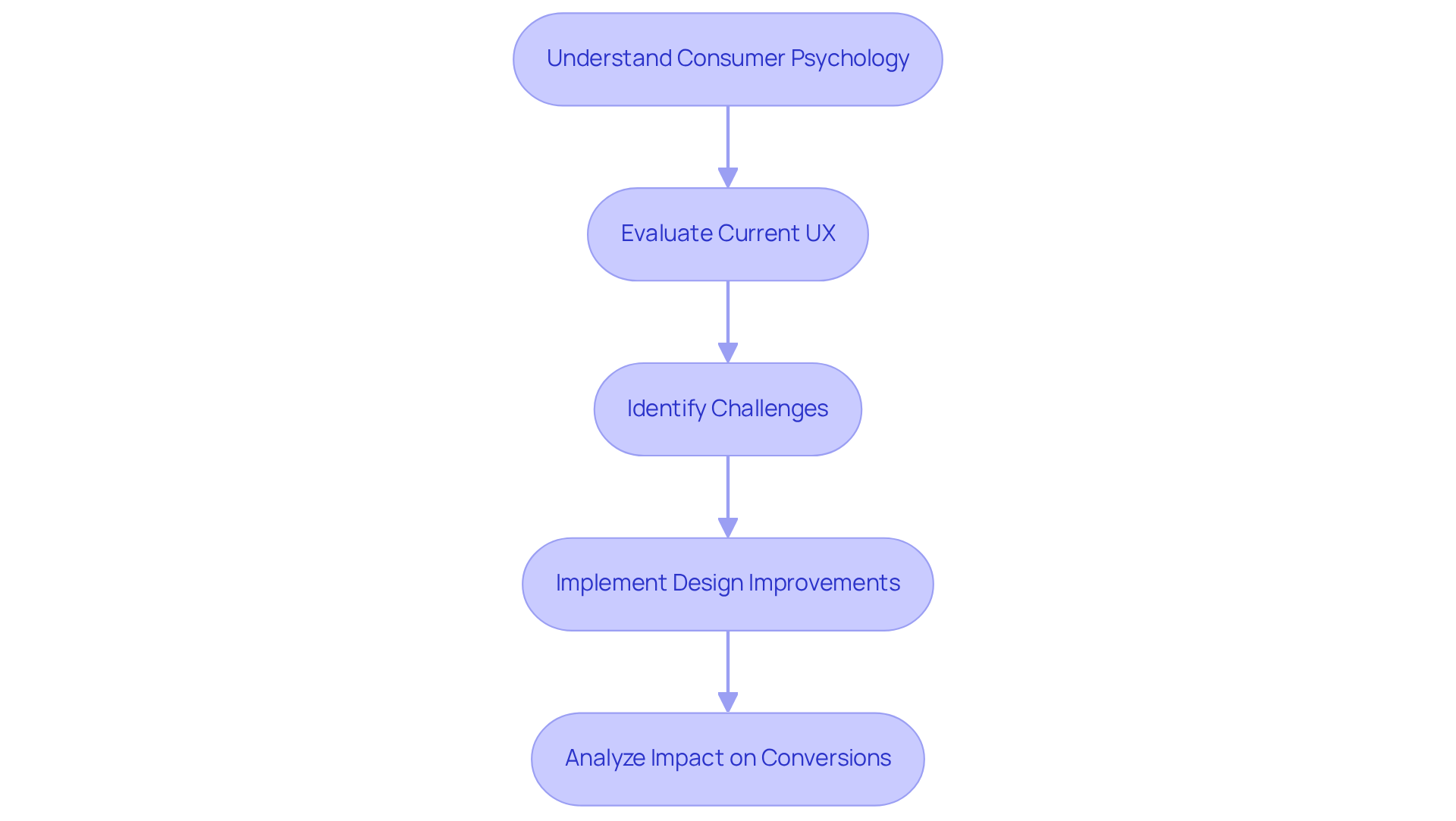
Conversion Copywriter: Creating Compelling Content that Converts
Conversion copywriters are experts in crafting persuasive content that compels audiences to take action. They skillfully leverage emotional triggers, compelling narratives, and (CTAs) to engage visitors and prompt desired actions, such as making a purchase or subscribing to a newsletter.
By gaining a deep understanding of their target audience's motivations and pain points, these specialists enhance conversion rate optimisation jobs by creating tailored messages that resonate, effectively converting readers into customers. Their storytelling expertise not only enhances engagement but also significantly boosts overall success, establishing their role as vital in the competitive landscape of direct-to-consumer marketing.
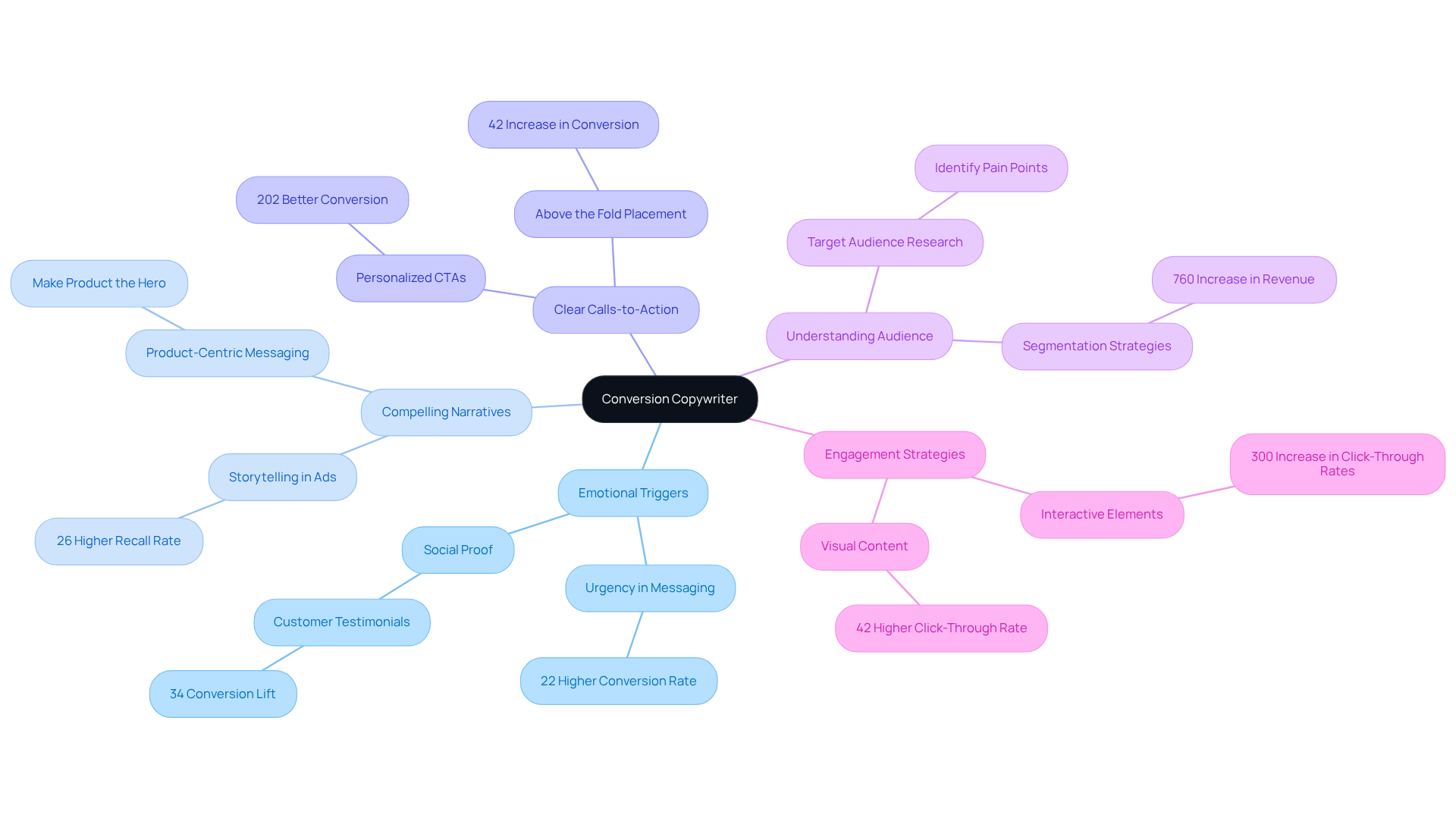
Data Analyst: Leveraging Insights to Inform Conversion Strategies
Data analysts play a pivotal role in optimizing success ratios by leveraging insights from consumer behavior to craft effective strategies that enhance outcomes. By meticulously examining metrics such as traffic origins, engagement levels, and success measures, they unveil trends and patterns that underscore optimization opportunities. For instance, a mere one-second improvement in page load time can yield rates 2.5 times greater than those associated with slower load times, thereby emphasizing the critical importance of speed in customer experience.
At Parah Group, our senior-level team employs this data-driven methodology to prioritize profitability and sustainable growth for direct-to-consumer businesses. Their expertise in analyzing complex data sets empowers brands to make informed decisions that significantly enhance user experience and drive sales. Current metrics utilized by data analysts include:
- Bounce statistics
- Average session duration
- User-generated content interaction
All of which provide valuable insights into customer behavior. Notably, user-generated content (UGC) contributes to a 3.2% success ratio, which increases by 3.8% when visitors engage with it, illustrating its effectiveness in improving outcomes.
Data-driven strategies are not merely advantageous; they are essential for the continuous enhancement of success metrics. For example, customized calls-to-action have been shown to achieve a 202% higher success rate compared to standard ones, highlighting how tailored messaging can effectively engage users. As we progress through 2025, the integration of advanced analytics and AI tools will further refine these strategies. Currently, 32% of marketers are utilizing generative AI, with an additional 43% planning to adopt it, resulting in a 55% increase in their capacity to experiment and optimize campaigns. This evolution will enable brands to refine their methods and achieve , as evidenced by our successful case studies, including a $30M apparel brand that experienced a 35% increase in customer engagement after implementing our strategies. Furthermore, our onboarding process ensures that clients are actively involved, allowing us to customize our strategies to meet their specific needs and objectives.
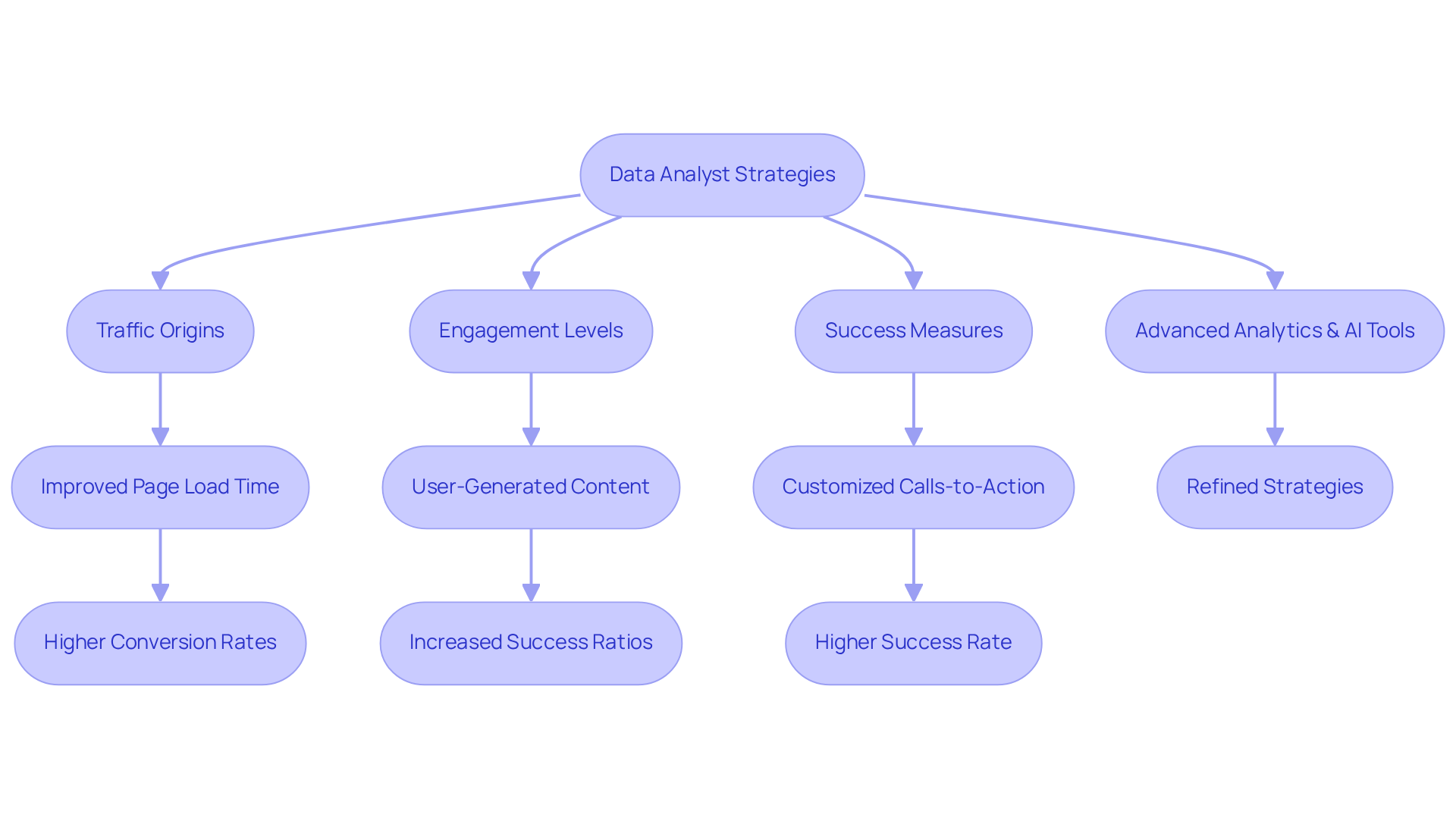
A/B Testing Specialist: Running Experiments to Validate Optimization Strategies
A/B testing specialists play a crucial role in conversion rate optimisation jobs by expertly designing and executing experiments that compare various versions of web pages or marketing materials. By systematically experimenting with components such as headlines, images, and calls-to-action (CTAs), these professionals can identify which variations yield the highest results. This iterative process not only refines strategies but also ensures that every modification is grounded in empirical evidence, making data-driven decisions the cornerstone of effective optimization.
Consider the Parah Group's collaboration with a $30M clothing line, which involved a homepage redesign emphasizing social proof and reviews. This strategic change led to a remarkable 35% . In another instance, their work with a $15M cleaning product company focused on enhancing the buying process through tactical adjustments, including the introduction of free shipping thresholds and bundles, resulting in an impressive 80% increase in average order value (AOV). These case studies underscore the transformative potential of A/B testing in e-commerce, especially for conversion rate optimisation jobs, as companies face challenges such as heightened competition and escalating customer acquisition costs.
Current best practices in A/B testing for e-commerce highlight the necessity of continuous experimentation and learning. A significant percentage of firms globally are now conducting A/B tests, aiming to leverage insights for effective optimization strategies. Specialists advocate for prioritizing tests based on potential impact and available resources, ensuring that even minor changes can yield substantial revenue gains. Notably, a mere 2% increase in transaction rates can elevate revenue from $100,000 to $102,000, illustrating the significant financial implications of optimization initiatives. As the market evolves, companies offering conversion rate optimisation jobs recognize A/B testing as a vital tool for enhancing profitability and customer engagement.
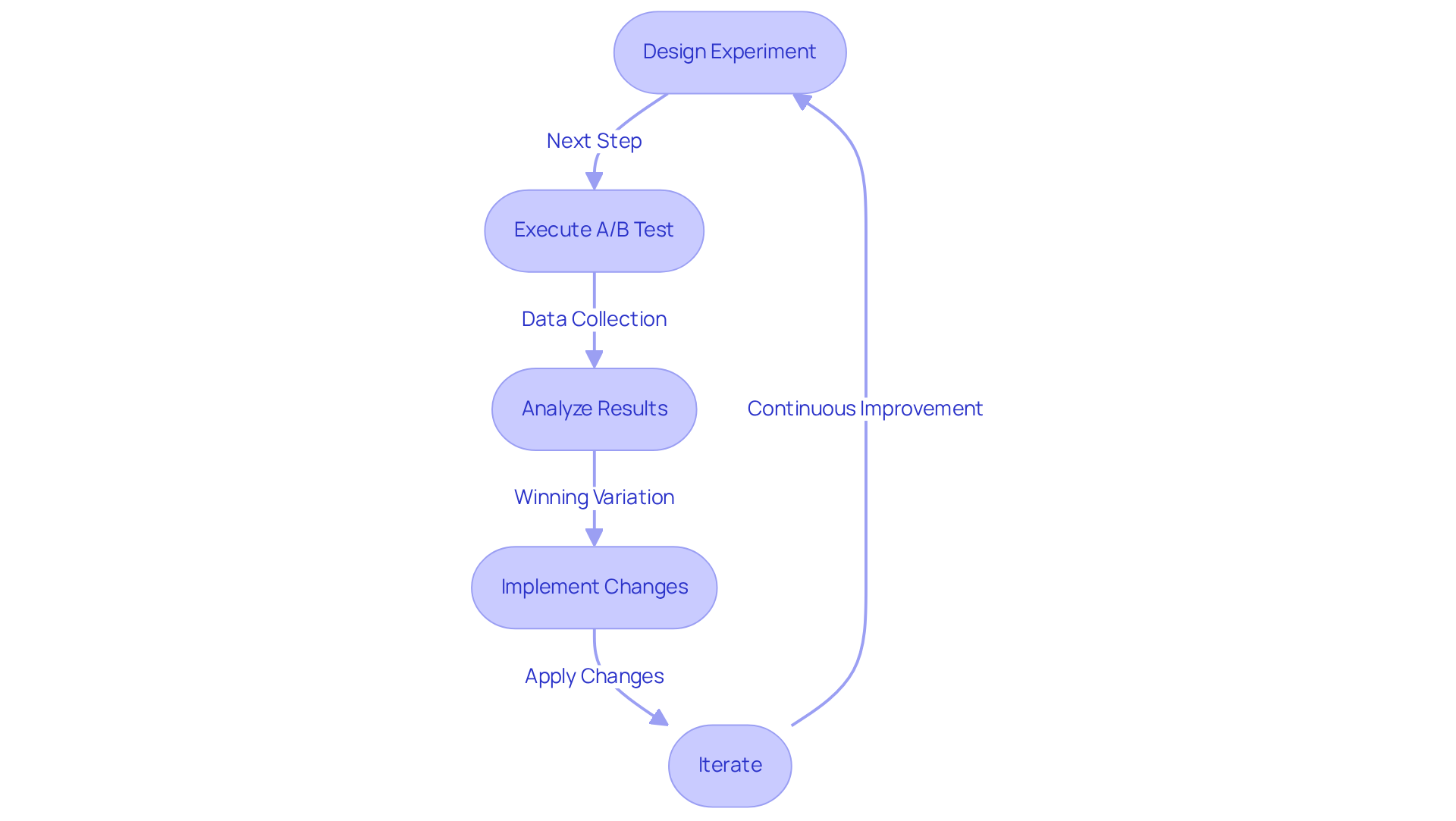
Competitor Analyst: Evaluating Market Trends to Enhance Conversion Tactics
Competitor analysts are essential in evaluating market trends and competitor strategies, which ultimately refines conversion tactics. By thoroughly assessing competitors' strengths and weaknesses, companies can uncover best practices and pinpoint areas that are ripe for improvement. This competitive intelligence is crucial for effectively positioning products within the market, allowing companies to adopt strategies that resonate with their target audience. In 2025, understanding the competitive environment is vital for crafting innovative strategies that enhance results and elevate overall performance. Companies that consistently monitor their rivals' actions can swiftly adapt to shifts in consumer behavior, ensuring they remain relevant and competitive.
For instance, Parah Group's case studies illustrate this clearly; a $30M clothing label saw a 35% increase in success metrics after implementing strategies such as refining product pricing and gamifying the shopping experience. Moreover, leveraging insights from market trend assessments has proven beneficial; organizations that have embraced these strategies report significant improvements in success levels and customer engagement.
Ultimately, the importance of is paramount, as it empowers companies to make informed decisions that improve conversion rate optimisation jobs. For further insights on CRO and how Parah Group can assist, please refer to our FAQs.
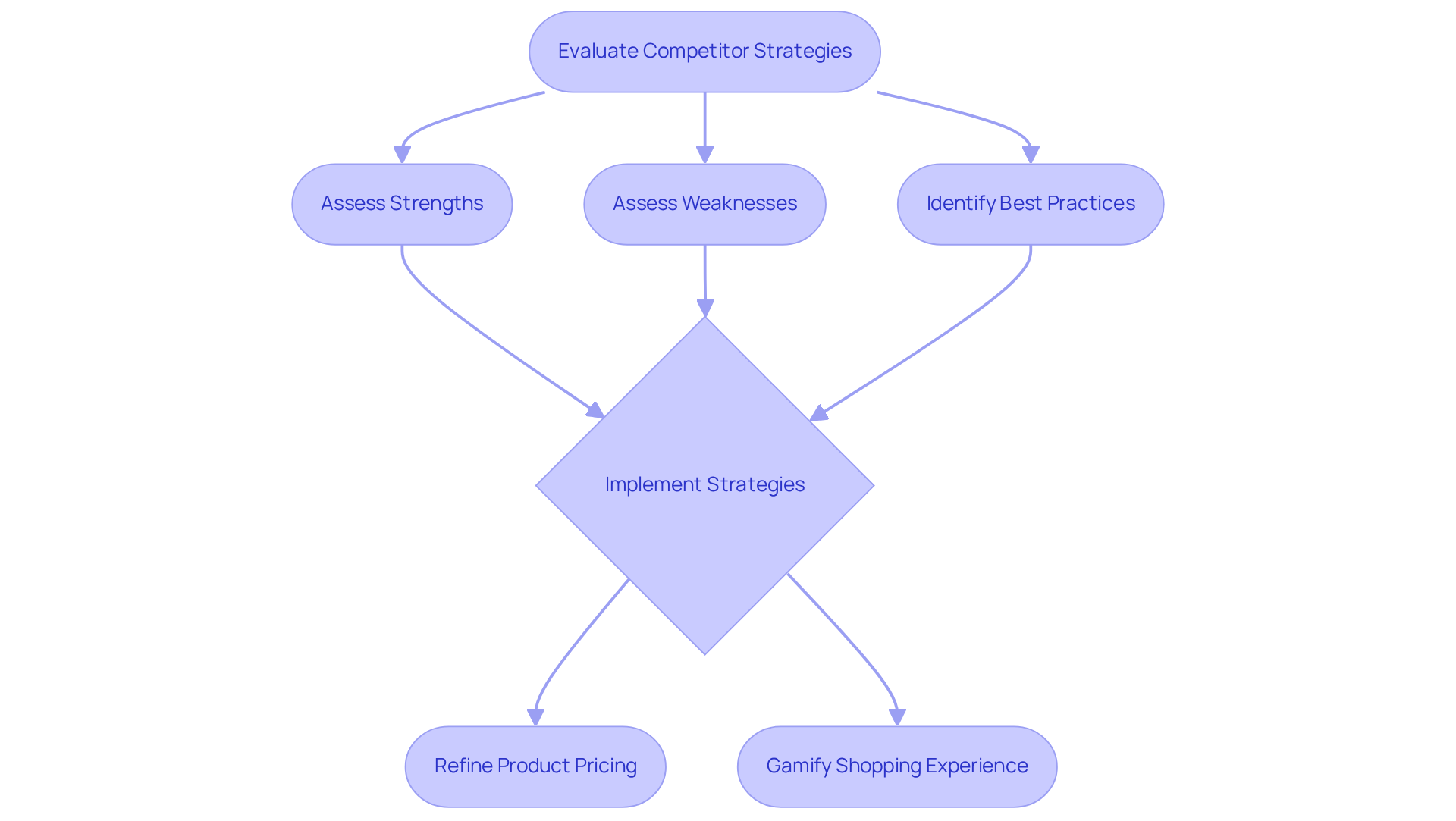
Customer Survey Specialist: Gathering Insights to Drive Conversion Improvements
Customer survey experts are pivotal in enhancing success metrics by meticulously collecting and analyzing consumer insights. By designing targeted surveys, they extract critical information about customer preferences, pain points, and motivations. This feedback is indispensable for informing product development, refining marketing strategies, and enhancing jobs related to website functionalities.
Effectively capturing the voice of the customer enables brands to tailor their offerings to meet specific needs, thereby significantly improving the customer experience. Such alignment not only fosters customer satisfaction but also drives substantial enhancements in metrics, establishing customer feedback as a cornerstone of effective conversion rate optimisation jobs in 2025.
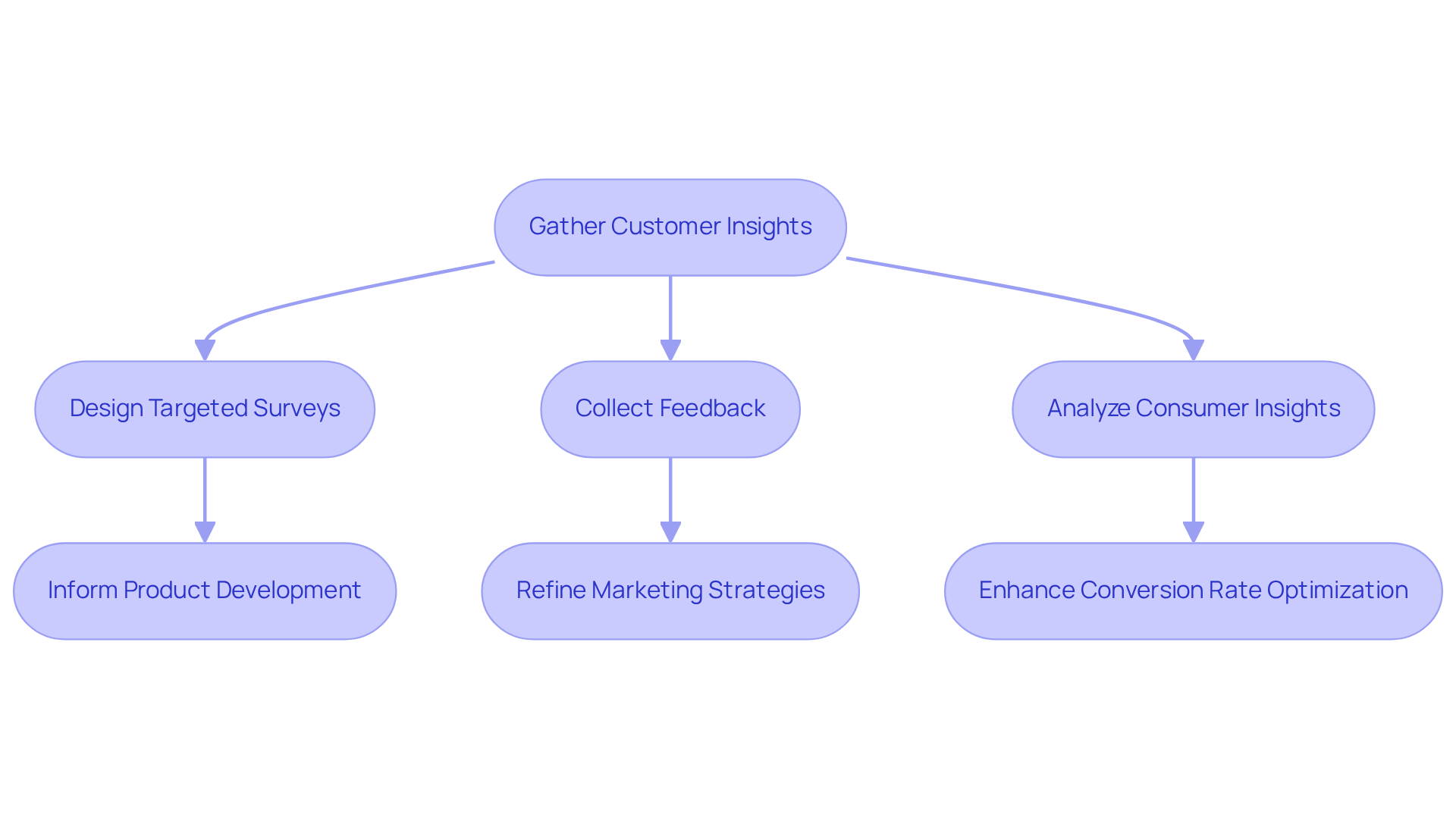
Call-to-Action Strategist: Designing Effective CTAs to Increase Engagement
Call-to-action strategists are pivotal in enhancing engagement and driving conversions through the design of compelling CTAs. By leveraging psychological triggers, they create CTAs that are not only clear and persuasive but also strategically positioned to seize attention. In 2025, the significance of CTAs is highlighted by the fact that personalized CTAs convert 202% better than their generic counterparts, underscoring the necessity for tailored messaging that aligns with the audience's interests.
Current trends in CTA strategies within e-commerce underscore the critical importance of urgency and clarity. Phrases such as 'Limited Time Offer' can accelerate user actions, while clear, actionable language is essential for steering users toward desired outcomes. For instance, CTAs like 'Shop the latest collection now!' and 'Get an exclusive discount by clicking the link in our bio!' exemplify effective tactics that enhance traffic and yield improved results.
Moreover, A/B testing remains a fundamental component in the enhancement of CTAs, empowering marketers to assess various versions and identify which designs and messages yield optimal results. This data-driven approach is essential for maximizing the impact of marketing initiatives, as effective CTAs can lead to increased interactions, such as likes and comments, thereby fostering a more vibrant community around the organization.
As demonstrated in Parah Group's case studies, companies that implement comprehensive conversion rate optimisation jobs, including refined CTAs, have witnessed significant improvements in their success metrics. For example, one clothing brand experienced a 35% increase in engagement following a homepage overhaul that emphasized social validation and enriched the visitor experience. This illustrates how a thoughtfully designed CTA, in conjunction with , can markedly elevate marketing effectiveness.
As Brett Thomas emphasizes, a meticulously crafted CTA is vital for guiding individuals toward actions such as purchases or subscriptions. Additionally, primary CTAs should be strategically positioned near the top of the page to guarantee visibility. By understanding and applying these strategies, direct-to-consumer (DTC) companies can substantially enhance their marketing success and overall performance.
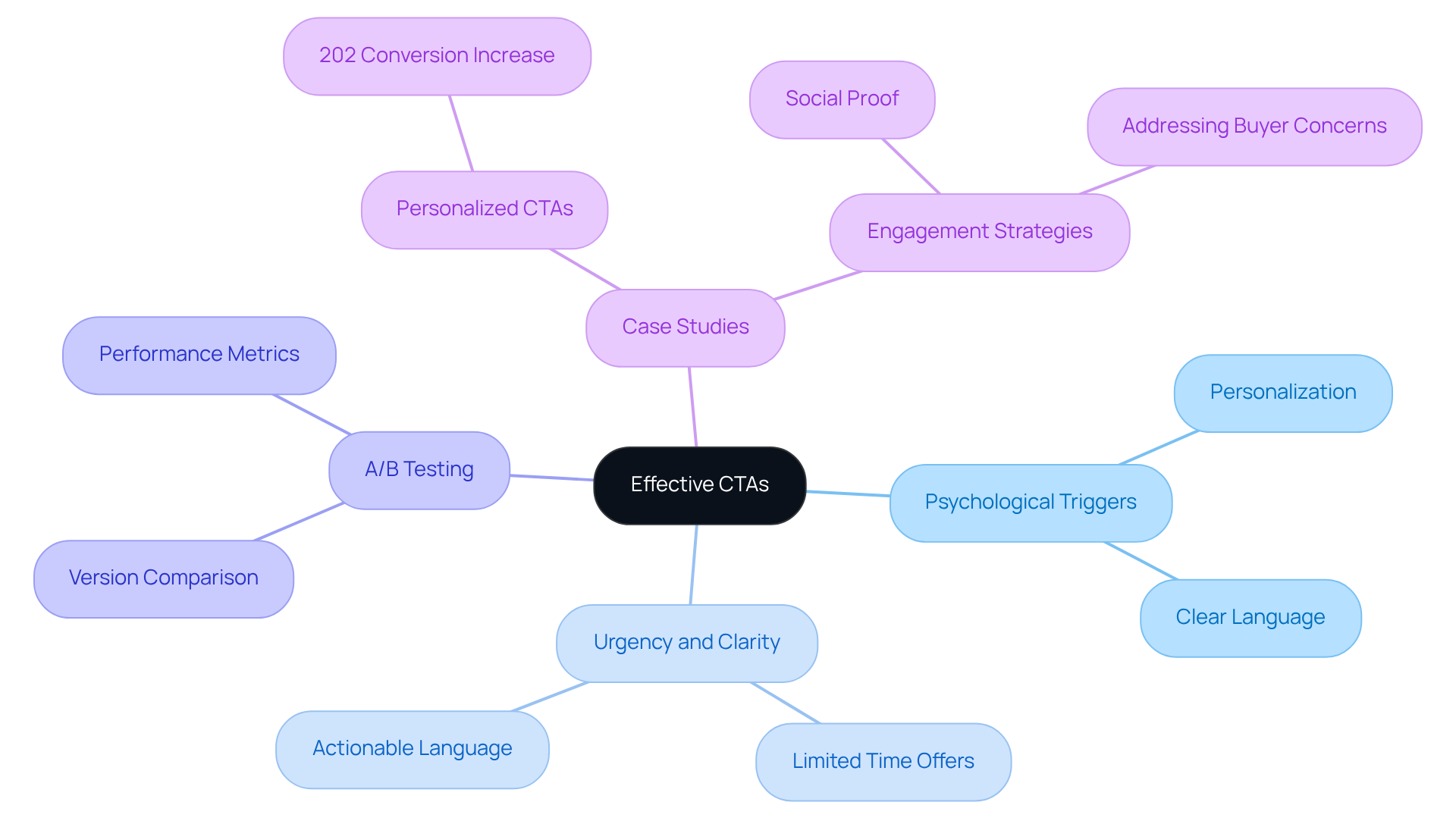
Consumer Psychologist: Applying Behavioral Insights to Optimize Conversions
Consumer psychologists leverage behavioral insights to significantly enhance conversion metrics, which is crucial for conversion rate optimisation jobs, by delving into the motivations and decision-making processes of users. They meticulously examine how psychological factors—such as cognitive biases and emotional triggers—shape consumer behavior, applying this knowledge to refine marketing strategies, website design, and messaging.
For example, recognizing that customized experiences can elevate revenue by over 25% empowers companies to adjust their strategies effectively. Moreover, innovative approaches like gamified progress indicators for free shipping thresholds and post-purchase upsells have proven effective for direct-to-consumer (DTC) companies, with tactics such as personalized subject lines in email marketing boosting open rates by 50%.
By harnessing insights into user preferences, companies can craft engaging experiences that resonate with their audience, resulting in substantial improvements in success metrics. Notably, the application of behavioral insights has shown an increase in success rates by as much as 32% through the use of trust signals.
Parah Group's case studies exemplify this success; for instance, a $30M clothing line benefited from conversion rate optimisation jobs, resulting in a 35% increase in conversion rates after enhancements to their homepage and the integration of social proof. Furthermore, as mobile e-commerce continues to expand, it is imperative to recognize that 61% of consumers are more inclined to purchase from mobile-friendly websites.
This strategic application of psychology not only enhances but also cultivates brand loyalty, ultimately driving sustainable growth.
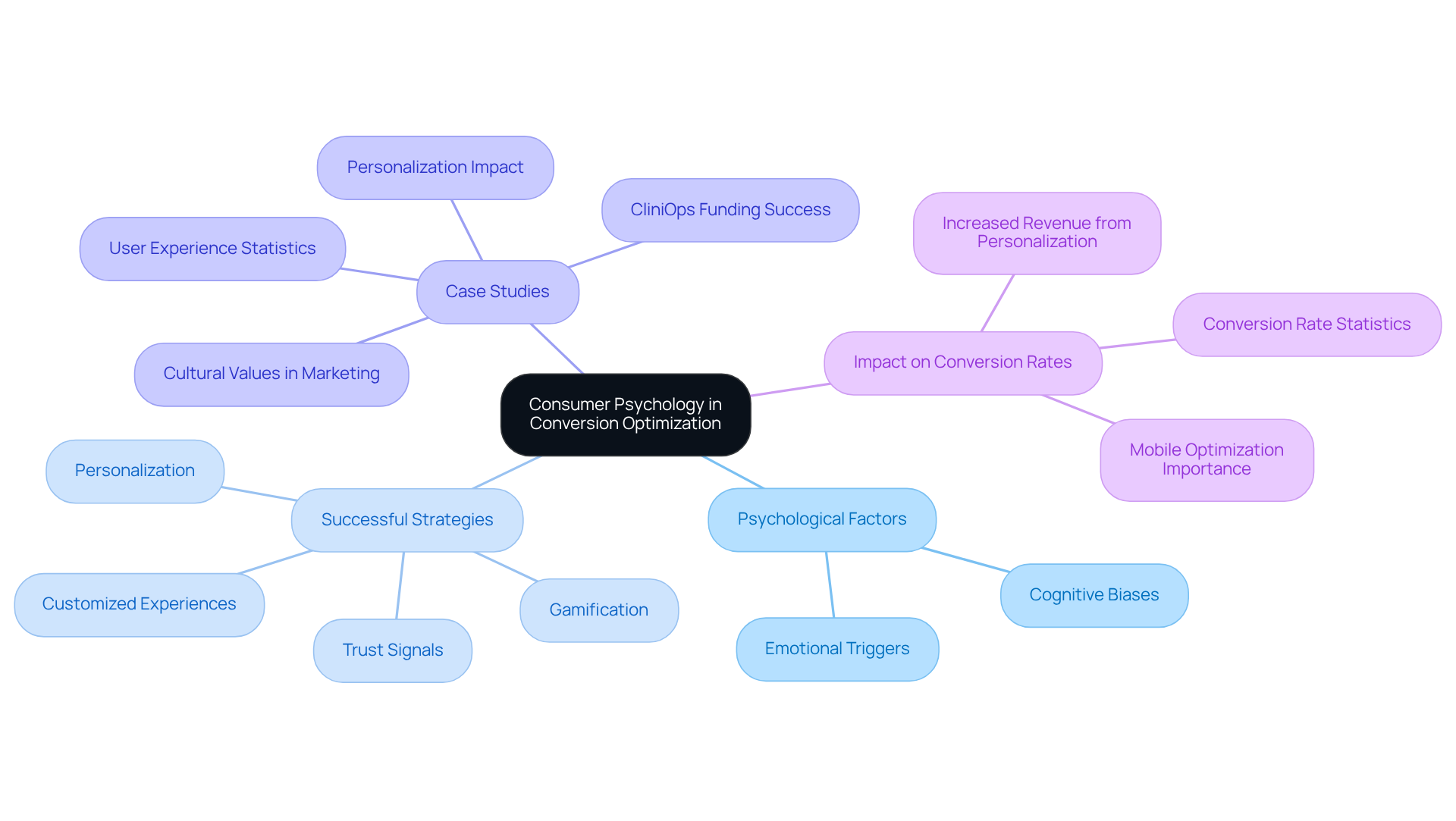
Conclusion
The significance of conversion rate optimization (CRO) for direct-to-consumer (DTC) brands is paramount. By implementing targeted strategies and leveraging specialized roles, companies can enhance their profitability and customer engagement without incurring additional advertising costs. This article elucidates how various professionals, from UI/UX designers to consumer psychologists, contribute to a holistic approach that fosters sustainable growth in a competitive landscape.
Key insights discussed underscore the importance of:
- User-centric design
- Compelling copywriting
- Data-driven decision-making
- Strategic use of A/B testing
Each role plays a vital part in refining the customer journey, optimizing marketing efforts, and ultimately driving higher conversion rates. For instance, tailored calls-to-action and an emphasis on mobile optimization have proven effective tactics that resonate with consumers and improve overall success metrics.
As the DTC market continues to evolve, embracing these essential CRO roles and practices becomes increasingly critical. Companies must prioritize conversion optimization as a fundamental aspect of their marketing strategy, ensuring they remain competitive and responsive to consumer behavior. By investing in expertise and innovative approaches, DTC brands can not only improve their conversion rates but also cultivate lasting customer relationships that drive long-term success.
Frequently Asked Questions
What is Parah Group known for?
Parah Group is recognized as a leading agency in conversion rate optimization (CRO) for direct-to-consumer (DTC) brands, focusing on enhancing profitability without increasing advertising costs.
How does Parah Group improve profitability for DTC brands?
Parah Group utilizes data-driven strategies and insights from consumer psychology to enhance success metrics and average order values (AOV) for its clients.
What are the success rates associated with effective CRO?
Organizations implementing strong optimization strategies can achieve success levels exceeding the industry average of 3.34%, with top performers reaching rates of 4.8% or higher.
What are some effective strategies for conversion rate optimization?
Effective CRO strategies include simplifying checkout processes, enhancing product pages with high-quality images and detailed descriptions, and leveraging user-generated content to build trust.
How do UI/UX designers contribute to conversion rate optimization?
UI/UX designers create user-centric experiences that ensure intuitive navigation and appealing aesthetics, which help increase engagement and conversion rates.
What impact can a well-crafted user interface have on success rates?
A well-designed interface can elevate success rates by as much as 200%, and improved UX design can yield increases of up to 400%.
Why is mobile optimization important for DTC brands?
Mobile devices account for 54.5% of global website traffic, and 67% of individuals prefer to purchase from mobile-friendly sites, making mobile optimization crucial for maximizing conversions.
What role does a conversion copywriter play in CRO?
Conversion copywriters create persuasive content that engages audiences and prompts desired actions, such as purchases or newsletter subscriptions, by leveraging emotional triggers and clear calls-to-action.
How do conversion copywriters enhance engagement and success?
By understanding their target audience's motivations and pain points, conversion copywriters craft tailored messages that resonate with readers, effectively converting them into customers.
FAQs











